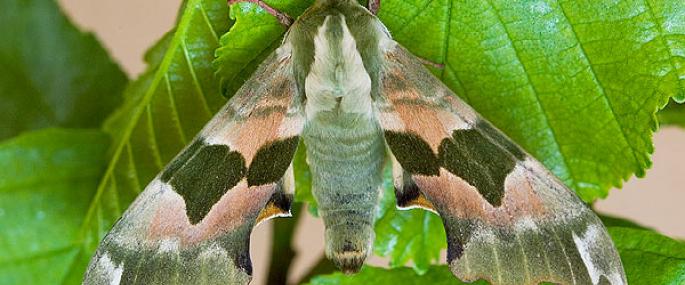The Lime Hawk-moth is a large hawk-moth, on the wing from May to June. It is commonly found in parks and gardens, as well as woodland, but flies only on warm nights. The caterpillars are quite distinctive: large and green, with pale streaks on each segment and a bluish 'horn' at the tail end. They feed at night on the leaves of lime, Silver Birch and elm, but the adults don't feed at all. During the day, the adults rest to avoid catching the attention of predators. This species hibernates as a chrysalis.
Moths such as the Lime Hawk-moth are common in gardens - why not set up a moth trap at night and see who comes to visit? To attract moths and butterflies into your garden, plant nectar-rich borders and shrubs for them to feed on. To find out more about encouraging wildlife into your garden, visit our Wild About Gardens website: a joint initiative with the RHS, there's plenty of facts and tips to get you started.
